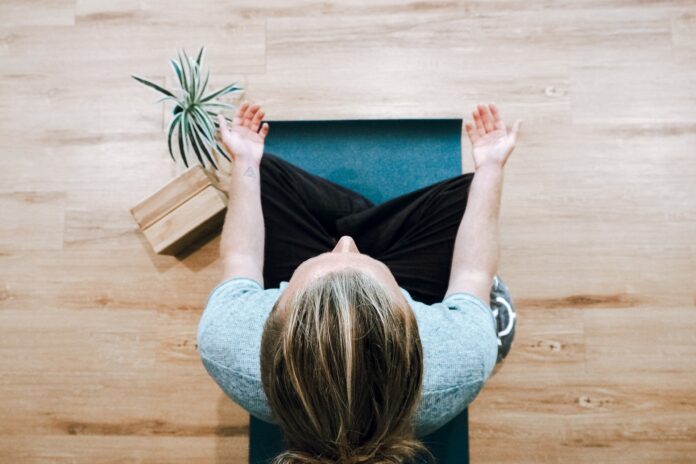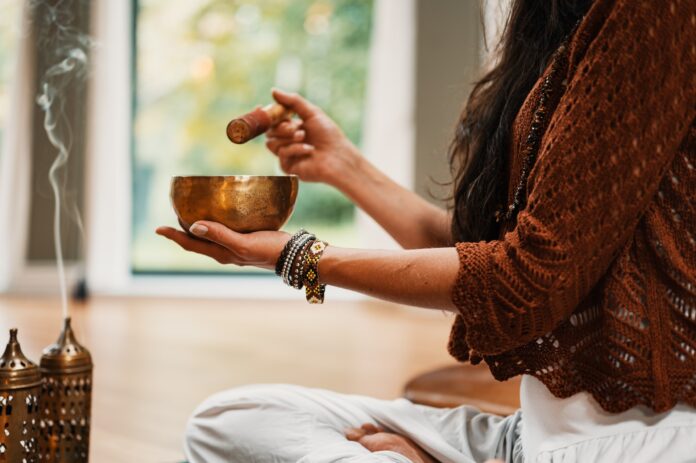What if you had a sanctuary in your house where you could cure your body, mind, and spirit all at once? Having a unique area in your home dedicated to quiet, tranquillity, and your mental well-being would be fantastic. Where would you go if you could get away from it all and spend time with God? You’ll need a dedicated space for this, such as a meditation room.
Everybody should have a designated area in their houses where they may meditate every day, physically and psychologically, recharging their bodies and maintaining a healthy state of mind. Meditation’s healing and transforming effect have yet to be fully explored, but all previous studies have shown that it has a potent healing and transformative capacity unlike any other. According to some research, meditation can alter the way our brains function.
There are no specific requirements that must be followed while creating a meditation room; nonetheless, a few things should be considered, particularly if you want to make your meditation room more serene. These six techniques to build a more soothing meditation room will help, but the most important thing is to go with your gut and only put in something you love—elements that provide a sense of serenity to you.
Aromatherapy

Aromatherapy is another consideration for your meditation space. You may do this by using essential oils from plants such as lavender (chamomile), peppermint (mint), and rosemary (lavender). You may use aromatherapy while meditating by lighting candles, incense, or heating oils. You can get more of these aromatherapy products at Kumi. As well as helping you relax, aromatherapy has several additional advantages.
A growing number of people are turning to this kind of treatment to improve their mental health and well-being. The immune system is boosted, muscular discomfort alleviates, and lowered or eliminated stress levels. Including aromatherapy in your meditation space is a terrific idea for all of these reasons.
Make use of calming colors.
Consider the room’s hue in addition to its physical and sensory components. You want to paint the space in a color that matches the vibe you’re going for. If you’re looking for a color that’s more peaceful and relaxing than bright or dark, pastels may be your best pick.
While some may disagree, others favor a darker paint hue because they believe it would create a womb-like atmosphere to help them rest. Even if you select a shade that doesn’t resonate with you, room color has an impact on your mood, so choose one that makes you feel at ease and tranquil.
Incorporate nature.

Bringing nature into your meditation and relaxation area is a no-brainer since nature is naturally soothing and refreshing. According to the majority, the practice of meditation is all about integrating your mind and body with the natural world and your immediate surroundings.
If you live in an urban area, you may not always be able to meditate outdoors in a peaceful, natural setting.
Consider incorporating natural elements into your meditation area, and you’ll notice an immediate shift in your state of mind. Natural components may be used in any way you choose. To create this effect, you may use plants (think of the jasmine aroma), vases of fresh flowers, or even tiny water features.
Every meditation room should include a water fountain. The sound of a bit of waterfall in your living room may be just as peaceful as the sound of the ocean’s shifting tides (and will drown out the sounds of the bustling city outside your doors).
Choose a more comfortable space.
Pick a space in your home that you like spending time in. This is a word that refers to a place that can rapidly elevate your emotions. The room should also be in a quiet region of the house and one that isn’t a popular destination for visitors.
Lighting is an important consideration when selecting a place. For example, being in a room with a lot of natural light quickly improves your disposition. Choose a sunny area for your meditation session. Or, if you like, start your meditation in a room with a view of the setting sun.
If you can’t locate a ‘room’ with these characteristics, think about using an outside place instead. A patio, deck, or flower garden can all fall under this umbrella term. You’re looking for a location where you may rest your mind and body without being distracted by other people’s activities.
Let fresh air in

In addition to the aromatherapy scents in the room, you also need to ensure that the air is clean. One of the numerous advantages of getting some fresh air is that it helps improve your mental sharpness and physical and emotional well-being.
This is not tough to achieve if your place is outside. If you must be inside, make sure that the space is well-ventilated and that you can sometimes feel a cool breeze.
You may want to bring in a stand-alone air purifier if you’re in a room with no windows or ceiling fans. Choosing a speaker with ‘silent’ technology will allow you to listen to your music without interruption.
Listen to meditative music.
Even if it isn’t required, music may be incredibly soothing to certain people. If you’re living in a bustling urban region, this is especially helpful since the noises of traffic, trains, and sirens are continuously piercing your walls.
Even if the music is playing in the background, it may help drown out the sounds of everyday life, enabling you to achieve a peaceful state of mind when meditating.
Choosing music without words is advised when it comes to selecting the soundtrack. Even if you like the sound of birds singing, the ocean, or the whistling of the wind, it doesn’t have to be classical music. To minimize interruptions, make sure the songs you choose are lengthy enough to play during your whole meditation session. You may also want to set the noises to repeat.
When setting up a space for meditation, there are many factors to consider. Choose a peaceful location away from the hustle and bustle of everyday life, and bring in elements of nature to create a solid foundation. Look around your own house using what you’ve learned here. For those seeking a place to unwind, you may be surprised at what room does the trick. By slowing your mind, you may make your body and home more receptive to the therapeutic advantages of meditation.







